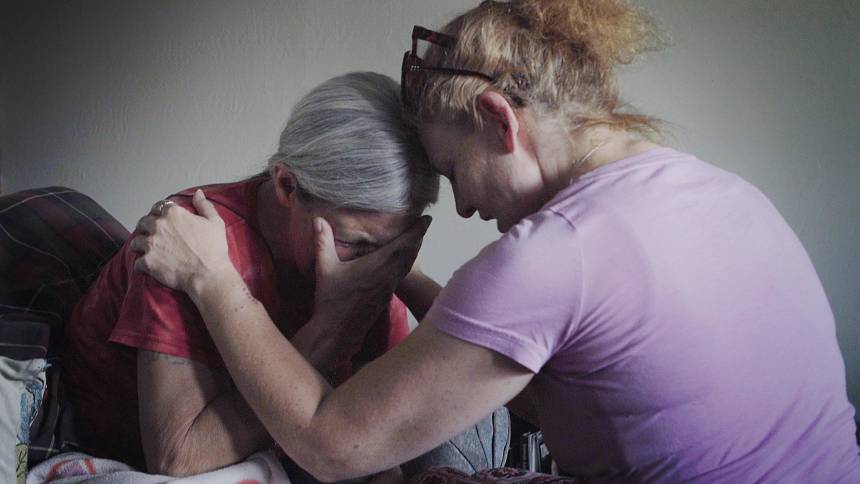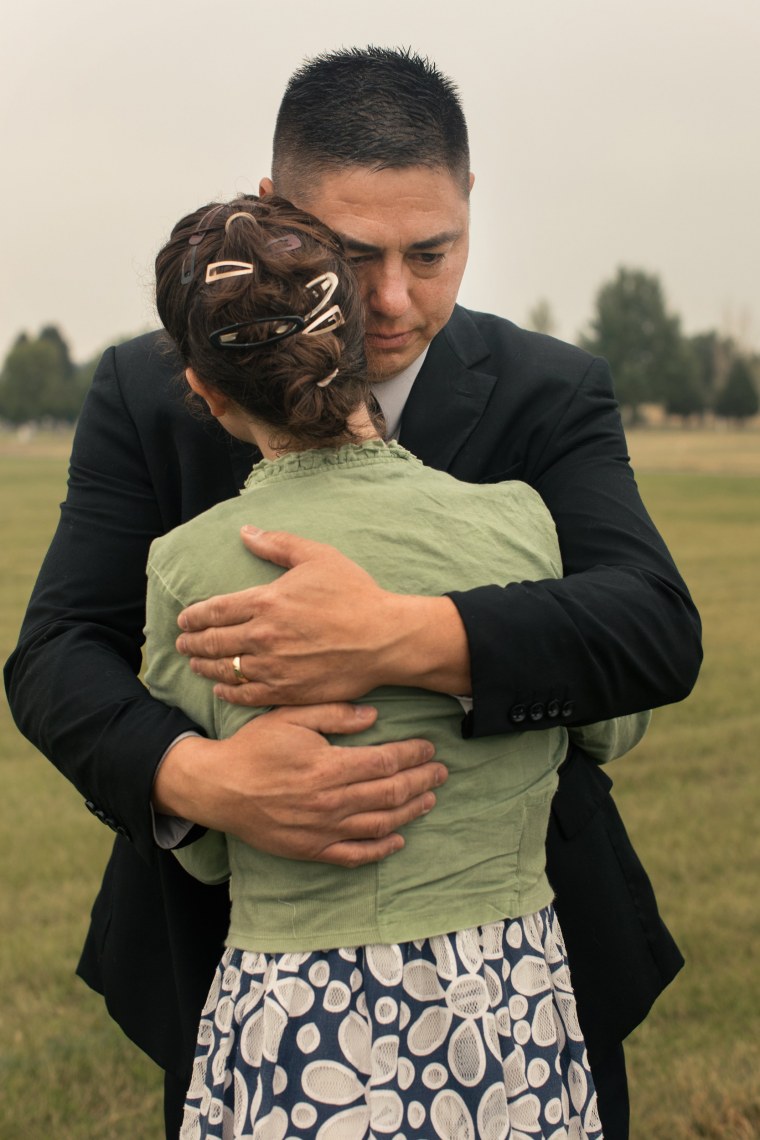Mr. Gaetz:
The July 16 edition of Salon reprinted an Alternet article that quoted some of the vilest, most callous and repugnant remarks I have ever read—and that’s saying something. The remarks were glazed in an oily hypocrisy as transparent as it was fraudulent.

The remarks were yours, Mr. Gaetz. (I can’t bring myself to call you “Congressman” Gaetz, because “Congressman” is an honorific, and I have never discovered anything in your character that suggests honor. I think I’ll call you “Matt.”) You voiced them during a podcast on June 8. They were aimed at the bereaved Congressman Jamie Raskin, whose son Thomas, on New Year’s Eve 2020, committed suicide.
The podcast was hosted by your spirit animal, Marjorie Taylor Greene. Marjorie sat mooing with approval at your side as you spoke, occasionally belching out a supportive comment of her own.
Do you recall those remarks, Matt? I do. The thrust of them was that Jamie Raskin was no longer able to discharge his congressional duties. Because his son had committed suicide.
There are levels of inhumanity, Matt. There are levels of character destruction, of barbarism and bullying, of abusive self-degrading malice. You know these levels, Matt, because they are where you and your fellow congressional cretins live like feral cliff-dwellers. Your horde has pumped these rancid values into the public discourse over the last decade; you’ve done your best to normatize them. To an appalling extent you’ve succeeded.
And now you have broken new mud. You’ve hacked out a new bottom level. No slur, no lie, no amount of hateful falsity in your public past can match your soulless verbal mugging of Congressman Raskin, a man of rare high character and rarer courage who just now is performing the definitive public service of his life: holding to account the moral miscreants like you who thought, on January 6, 2021, that it would be a good idea to follow Donald Trump’s goading and vandalize the United States Capitol building in Washington.
Now you want Jamie Raskin out of Congress—you know, for his own good. Coincidence? Maybe.
You put on your Sigmund Freud pants, Matt, to explain to us laypeople why Jamie Raskin must retreat from the public scene:
“I think that he takes that trauma and he associates it now with his work in the Congress to such an interwoven way that he’s unable to do the congressional experience outside of just the dungeon of that personal trauma . . . I think it makes him look at everything in these very like, dark and severe ways.”
Is that what you like think, Matt? Your . . . analytical gifts are stunning. You kept your own hide safely distant from the violence that day, yet you somehow divined without evidence that it was a bunch of far-left (“anti-fa”) zealots who triggered all the trouble. Still, you were quoted as saying, “We’re proud of the work we did on January 6th to make legitimate arguments about election integrity.” Doesn’t this make you—oh, a proud far-left anti-fa zealot?

Here, though, is the nub of it, Matt: Congressman Raskin will surmount your venomous hypocrisy. Your real victims are the millions of Americans whose lives have been scarred by a child’s mental illness and/or suicide. Often these people are shunned into the bargain by a society that assumes they are crazy themselves, or somehow to blame. I speak from experience. Now they—we—Congressman Raskin—suffer a fresh round of gratuitous stigma, via your clueless and falsehearted claim that such bereavement robs survivors of the ability to function.
Statistics on mental illness vary, as do definitions of mental illness. The National Association on Mental Illness reports that more than 14 million people suffered serious mental illness (incurable brain diseases such as schizophrenia) in 2021. Lesser forms of mental illness affected a fifth of the population. Suicide rates are easier to pin down. Some 46 thousand Americans killed themselves in 2021. About half of these were mentally ill. The Raskin family courageously announced that Tommy, a Harvard Law School student, had suffered from serious depression for years. Depression is a leading symptom of chronic bipolar disorder.
The Raskin family made their announcement to combat stigma.
What was your own point, Matt?
History and common sense make you look like a fool, Matt, perish the thought. “And death shall have no dominion,” wrote Dylan Thomas, and for most bereaved people, this is at least partly true. They forge on. Abraham and Mary Todd Lincoln lost their beloved 11-year-old son Todd to typhoid fever in February 1862, in the midst of the Civil War. Less than a year later, Lincoln issued the Emancipation Proclamation. Meningitis took the life of Susy Clemens, Mark Twain’s cherished daughter, while Sam and Olivia were away in Europe. “It is one of the mysteries of our nature that a man, all unprepared, can receive a thunder-stroke like that and live” Sam wrote. Yet he did live, and wrote some of his more important works before his own death in 1910.
The list goes on to encompass the millions of unknown parents and siblings who bravely have forged on, electing to consecrate their lives and work to the memories of their lost loved ones.
Your intrusion into the Raskins’ grief was out of line, Matt Gaetz. Only those who have actually lost a child, to suicide or otherwise, are qualified to discuss the despair that descends, against their will, until “comes wisdom through the awful grace of God,” per Aeschylus.
The Alternet quotes you as saying, piously, “[Y]ou know, no one would ever want to lose a child, particularly to suicide,” and, “As human beings, our hearts go out to him.” How true and how touching. You could prove your sincerity and commitment to these remarks in many ways.
The American mental healthcare system is in shambles. This year, committees in both houses of Congress at last began to focus on solutions. The Senate Finance Committee has released a discussion draft regarding mental health care for young people in Medicaid. In May, President Biden released his draft for a comprehensive strategy. And less than a month ago, your body, the House of Representatives, passed the Mental Health and Well Being Act, and two other acts aimed at reclaiming those afflicted with madness and addiction.
These are essential yet tiny steps. Massive work remains to be done: reforming our medieval criminal-justice system as it relates to mentally ill prisoners; rewriting outdated and harmful policy mandates; training many more care workers; speeding up access to diagnosis and treatment; vastly increasing public education; perhaps even creating a cabinet-level office to unify these and all other operations. Oh yes: and reducing stigma.
Have you thought of taking a leadership role in some or all of these initiatives, Congressman Matthew Gates? Being a part of seminal reform in mental healthcare would give your legacy a priceless quantum boost. It might even get your thoughts diverted from political conspiracies—which, after all, as you might know, can be a sign of paranoia.




















 Near the beginning of my recently published book about mental illness, “No One Cares About Crazy People,” I write:
Near the beginning of my recently published book about mental illness, “No One Cares About Crazy People,” I write:  I always believed that Michael was destined to be the major writer between us. He knew theater, and knocked out several good plays and wonderful poems. His wit was sly and dry, and his literary gifts even then were enormous. He was better than I ever was. Still is.
I always believed that Michael was destined to be the major writer between us. He knew theater, and knocked out several good plays and wonderful poems. His wit was sly and dry, and his literary gifts even then were enormous. He was better than I ever was. Still is.

